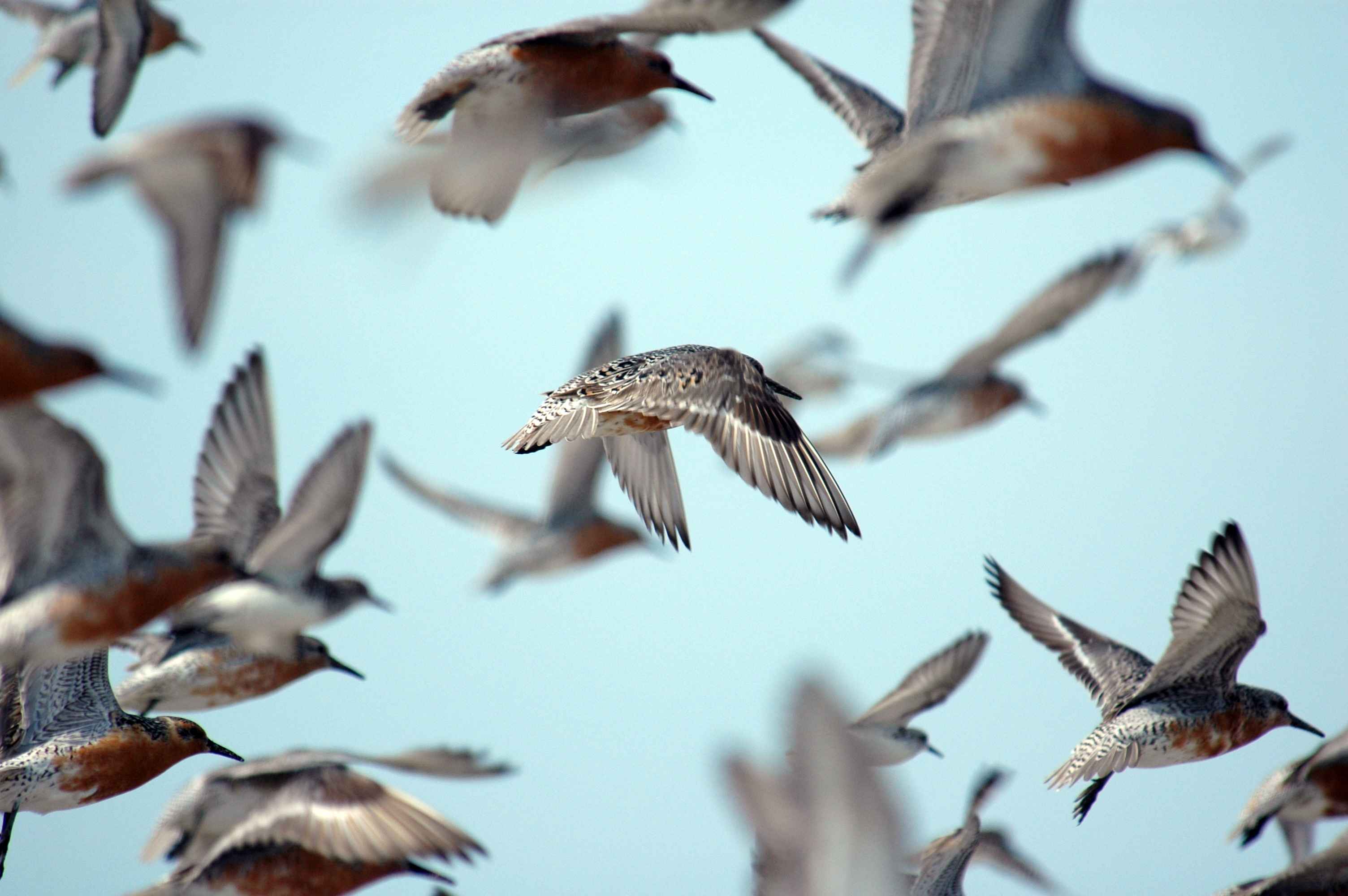
( B) The log-likelihood of the data per bird ( ) as a function of n c with J optimized for each value of n c same snapshot as in A. ( Inset) Zoom of the crossing point error bars are obtained from the model’s predictions of fluctuations of C int( J, n c). Matching the experimental value of C int = 0.99592 determines J = 45.73. ( A) The predicted strength of correlation, C int, as a function of the interaction strength J, with n c = 11, for the snapshot in Fig. 1. Setting the strength and range of interactions. The statistical mechanics models that we derive in this way provide an essentially complete, parameter-free theory for the propagation of directional order throughout the flock.įig.

We use this framework to show that the effective interactions among birds are local and that the number of interacting neighbors is independent of flock density, confirming that interactions are ruled by topological rather than metric distance ( 14).
FLOCK OF BIRDS HOW TO
Here we show how to bridge this gap by constructing a maximum entropy model ( 10) based on field data of large flocks of starlings ( 11– 13). Despite detailed development of these ideas ( 6– 9), there still is a gap between theory and experiment. A natural test case for this approach is the emergence of order in a flock of birds: Out of a network of distributed interactions among the individuals, the entire flock spontaneously chooses a unique direction in which to fly ( 4), much as local interactions among individual spins in a ferromagnet lead to a spontaneous magnetization of the system as a whole ( 5). Physicists have long hoped that such collective behaviors in biological systems could be understood in the same way as we understand collective behavior in physics, where statistical mechanics provides a bridge between microscopic rules and macroscopic phenomena ( 2, 3).

The collective behavior of large groups of animals is an imposing natural phenomenon, very hard to cast into a systematic theory ( 1).


 0 kommentar(er)
0 kommentar(er)
